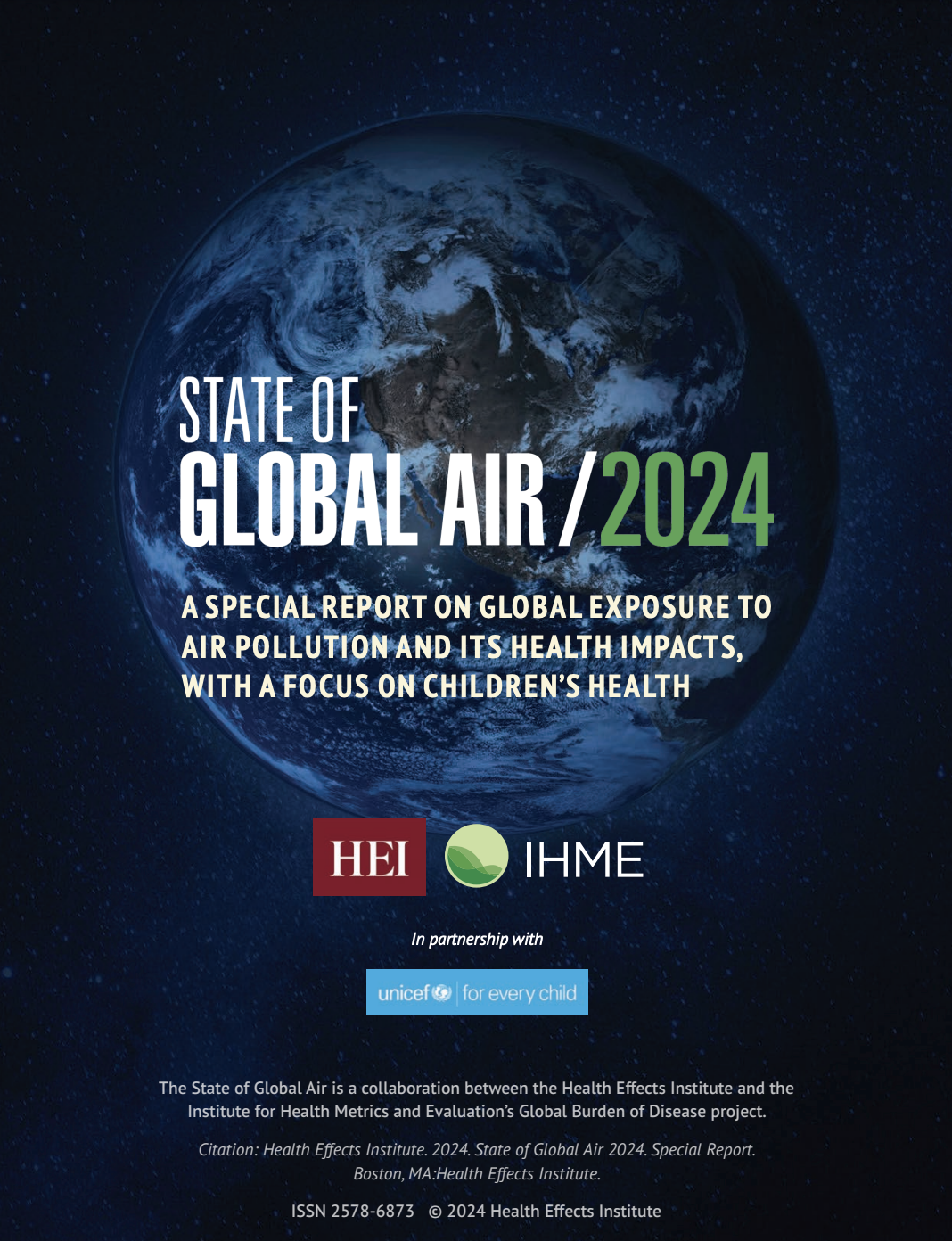Children are uniquely vulnerable to air pollution, and damage can start in the womb with health effects that can last a lifetime.
The State of Global Air 2024 report highlights how air pollution was the second leading risk factor for death among children under 5 years in 2021, after malnutrition. In 2021, more than 700,000 deaths in children under 5 years were linked to air pollution; this represents 15 per cent of all global deaths in children under five and means that every day almost 2000 children under 5 years die because of health impacts linked to air pollution. The numbers include more than 570,000 neonatal deaths.
This report also shows that in 2021, air pollution was linked to 34 per cent of preterm births globally. Complications associated with preterm birth are the leading cause of death in children under 5. Preterm babies who survive may face lifelong health consequences due to disabilities and developmental delays.
The report also highlights the bidirectional relationship between air pollution and climate change. PM2.5 air pollution comes from the burning of fossil fuels and biomass in sectors such as transportation, residential homes, coal-burning power plants, industrial activities, and wildfires, many of the same sources that contribute to greenhouse gases.
The report also presents information on exposures to and health impacts of exposure to common air pollutants including fine particulate matter, ozone, and for the first time, nitrogen dioxide.
The report was produced by the State of Global Air Initiative, a collaboration between the Health Effects Institute and the Institute for Health Metrics and Evaluation’s Global Burden of Disease project in partnership with UNICEF. The report is based on data from the Global Burden of Diseases, Injuries, and Risk Factors Study (GBD 2021) of the Institute for Health Metrics and Evaluation (IHME), producing estimates of the impact of 88 environmental, behavioral, and dietary risk factors on health across 204 countries and global territories. The estimates are based on the globally modeled burden of disease estimates of IHME and do not reflect official country reporting.
